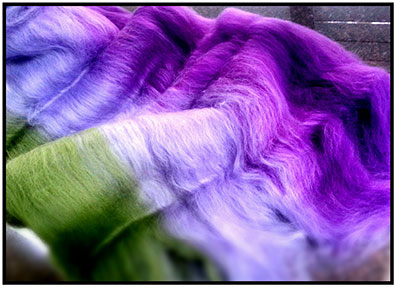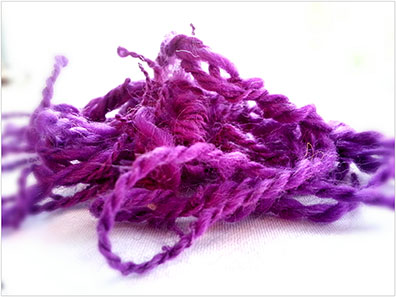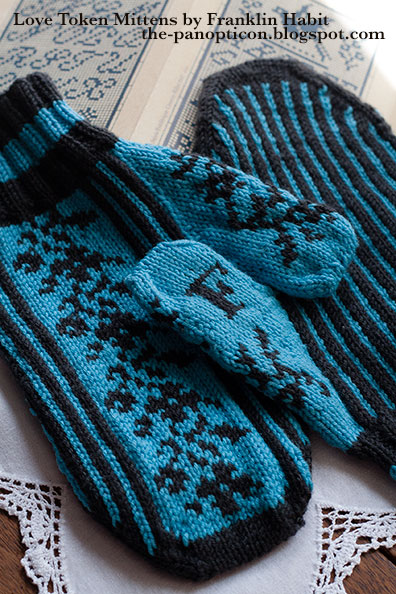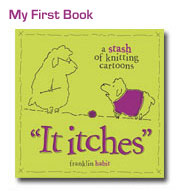My life, it sure is hot stuff.
In case you missed the
previous installment, I'm setting out to knit myself a pair of late nineteenth-century gentlemen's bathing drawers whether you like it or not.
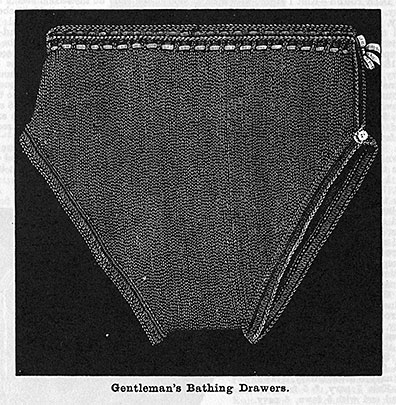
It's a bit of advance fun for this: a
Nautical Knitting Caribbean cruise with Melissa Leapman. Melissa has caught the fever and is pelting me with illustrations and photographs of vintage knitted suits, though none quite so old as my intended.
We're having such a good time that we've decided to make this a challenge for all the cruisers. (If you're not yet on the passenger list, the link above will tell you how to become one.)
If you're one of the happy souls who will be sailing with us in December, knit or crochet yourself a piece of cruise wear. It can be
any sort of cruise wear–not necessarily a bathing suit.
We're easy–it can be a cover-up for over your bathing suit, something to lounge in on deck, something to wear that's got a nautical theme to it. And we're going to award prizes.
Here in the workroom, I have been puzzling over what level of historical accuracy is called for with this piece. Chief among my concerns is the choice of fiber, which at the time would have been wool. Period. Until the arrival of springy, waterproof artificial fibers, most bathing costumes were made of wool–knitted or not.
It was the best choice–but that doesn't mean it worked perfectly.
Since I announced this project, I've been deluged with tragic tales of wool bathing suits. They sag. They itch. They fill up with sand. They refuse to dry out. They were replaced by synthetic suits quickly, completely, and for good reason.
In 2013, wool's not my only option. I could, for example, choose a yarn like
Cascade Fixation that blends cotton and elastic. With elastic, I might create a suit that won't sag to my knees and expose my goodies the minute it hits the pool.
But it won't be a Victorian suit. It won't even be close.
The point of this, and there is one, is that I want to experience an original suit as nearly as possible, and that means wool. Furthermore:
unlined wool. If I find the knitting of this suit is enjoyable, and decide to knit another, I'll see about trying something more modern next time.
With that question settled, I had to determine what weight of yarn to use. Nobody carries the "Baldwin and Walker's super fingering" the pattern specifies. Ain't it always the way? You pick out the pattern and find the yarn is discontinued.
I thought I'd write here about how I've determined what yarn to use, but with a caveat: mine is not a nice, tidy, organized brain. I seldom go from Point A to Point Z in a line of reasoning without detours and switchbacks. I thought about trying to make it seem otherwise, for pedagogical purposes, but I realized very quickly that worrying too much lately about making these entries polished and pretty is the number one reason you haven't heard from me.
So if you want more, and you seem too, I'm afraid you'll have to put up with the eccentric paths my projects always take.
I didn't know much about the yarn, but I did have a needle size: seven. Remember, of course, that we're talking about a British publication from before the turn of the twentieth century–so their seven is unlikely to be anything like a modern US seven.
However, I own three English needle gauges contemporary with the pattern. I checked out what a seven meant at the time–roughly, a modern 5 or 6. Roughly, because when an old size corresponds exactly to a modern size you may count yourself fortunate.
With a five or six, what sort of yarn would I need to produce a fabric that looks akin to what's shown in the engraving?
Also, with a five or six, what yarn would give me a garment of approximately the correct size?
We can only guess at the size the Weldon's suit came out, because the editors only tell us this:
For a medium, cast on 96 stitches.
That cast on is at the waist. How far around do those 96 stitches have to go? Halfway. I know this because I sat down and worked the pattern in my head, start to finish, scribbling an annotated schematic as I went. Here it is.

Not exactly complicated shaping, which I appreciate.
So for a men's medium, we need 192 stitches to wrap around the medium waist. We don't know how big the waist is, as there's no measurement given for that designation. Anywhere. Ever. Nor do they give us a desired gauge–they never do. The earliest mention of specific gauge I've ever run across was from the 1930s.
Let's say, for the sake of argument, that a medium waist was considered 32 inches. You have to start somewhere. That's a medium waist in modern men's clothing construction, though more often than not it'll be vanity sized as a 30 or even a 29 waist. (Men: If you haven't actually
measured your waist lately and think the number on your Levi's tag is your true measure, you're in for a nasty shock.)
And yes, yes, yes, "people were smaller in those days."
Smaller, yes. What they were not, in general, is
miniature. The amount of growth from then to now is often greatly exaggerated. Judging from extant examples of men's fitted garments and tailor's drafts, a waist of 32 inches would not have been either very large or very small. It would have been sorta average. You know, medium.
192 stitches divided by 32 inches equals...six stitches per inch.
Six stitches per inch is a little large for a yarn designated as "fingering," but this yarn was called "fingering" more than a century ago. Definitions change. And as you know if you've been knitting longer than a week, even now they frequently mean nothing.
A quick check of my trusty 1882
Dictionary of Needlework reveals an entry about "fingering" that confirms this was a stocking-weight yarn. Okay, fine. We recall that our particular defunct yarn was actually called "super fingering." Super, at the time, was often a designation meaning "more" or "larger." It's not out of the question, in fact it seems likely, that Baldwin and Walker were producing a yarn that was kinda like fingering, but fatter. I would have called it Baldwin and Walker's Fat Fingering, but they didn't consult me.
Here's where things get confusing. I have been able to establish with reasonable certainty the size of the needle–at smallest, a size five. A modern heavy fingering knit with a size five, even in the hands of knitter so uptight that he bends steel needles like marzipan, is going to produce loose fabric.
Loose fabric is not what is shown in the engraving, loose fabric is not theoretically desirable unless one is a late-Victorian flasher (and one is not), loose fabric is certainly not advisable in a garment that we know is going to stretch like mad anyhow.
This is where I decided to stop thinking and start knitting. With a size six needle, what would I get if started knitting with, say, a light worsted-weight wool? As luck would have it, I had some in stash.
I got a loose fabric of five stitches to the inch. Too big for the medium-sized suit, and positively transparent with even a little stretching.
So I went down a needle size, to our other possibility, a size five. I got a noticeably firmer fabric, and a gauge of five-and-a-half stitches to the inch.
I am a loose knitter. When looking to achieve the suggested gauge for a pattern, I usually go down a needle size. So I did.
I got six stitches to the inch and a very, very firm fabric. Still supple enough to wear comfortably (comfort being relative, of course) but not
droopy.
Bingo.
If I go by needle size, the yarn I need ought to be worsted or perhaps sport weight. Any lighter, and I'll have to significantly reduce the needle size or face the possibility of indecent exposure the minute I put the drawers on. I can only assume that the super fingering was fat enough to qualify, in our time, as a sport weight. Either that, or
- the Weldon's sample knitter had the tightest tension ever recorded;
- the pattern gives an incorrect needle size;
- or all three of my needle gauges, one of which is identical to the model printed in an earlier issue of Weldon's, are incredibly wrong.
Still with me?
And Finally (For Now)
Some of you were rather insistent that these could not have been
meant as drawers for swimming. They're too revealing, you said. They
must have been made to wear under a swimsuit or to wear while you
were
being bathed (as in, given a bath) by a servant, for reasons of modesty. No Victorian would ever have worn these alone to swim, it was suggested, because they didn't cover the swimmer from neck to knee.
Well, no. These were meant for swimming. I was planning to post
this link to the Brighton Swim Club by way of illustration,* and was amused to see that commenter "Backyard Notes" beat me to it. We have some peculiar, popular misconceptions about "the Victorians" these days, often quickly dispelled by a look at the historic record.
These may not have been intended for
mixed sea or pool bathing (you don't see any women in the Brighton group photo), but they certainly weren't for the bathroom.
Weldon's was a magazine for the middle class, not for the upper crust. It may seem in our servantless era that having a live-in maid must have made you superfancy; but it didn't. It made you solidly middle class. To retain a valet or gentleman's gentleman, you'd have needed a level of income above that. Your wife and daughters might have knit, but they probably didn't look to
Weldon's for practical knitting patterns.
Only an odd and anomalous nineteenth-century man who would have put on knitted drawers so his valet could wash him.
That level of attendance would, in the first place, have been unusual. A servant (most likely not the valet, but a scullery maid or housemaid with access to the boiling water) might have filled the bath, if the house were not equipped with running water or fitted bathtubs. He might have attended the bath, in the sense of being ready, nearby, with a towel and dressing gown.
The valet might well have shaved the gentleman. Not uncommon.
But, if everything I've read is true, the valet would not have flung around the soap and cloth unless his employer were very young, very elderly, or very infirm.
Moreover, by definition a personal servant saw you at your worst and at your most naked/vulnerable. They laid out your clothes. They got you into and out of them. They packed and unpacked your cases, handled your jewels and watches, and in some instances assisted in your extra-marital (or pre-marital) philandering. You would not knit and wear special underwear to keep your valet from seeing your winkie unless you were a decidedly odd fellow indeed.
And listen, I
know from odd. I'm knitting a damned pair of bathing drawers.
*Note to self: Must buy top hat.


